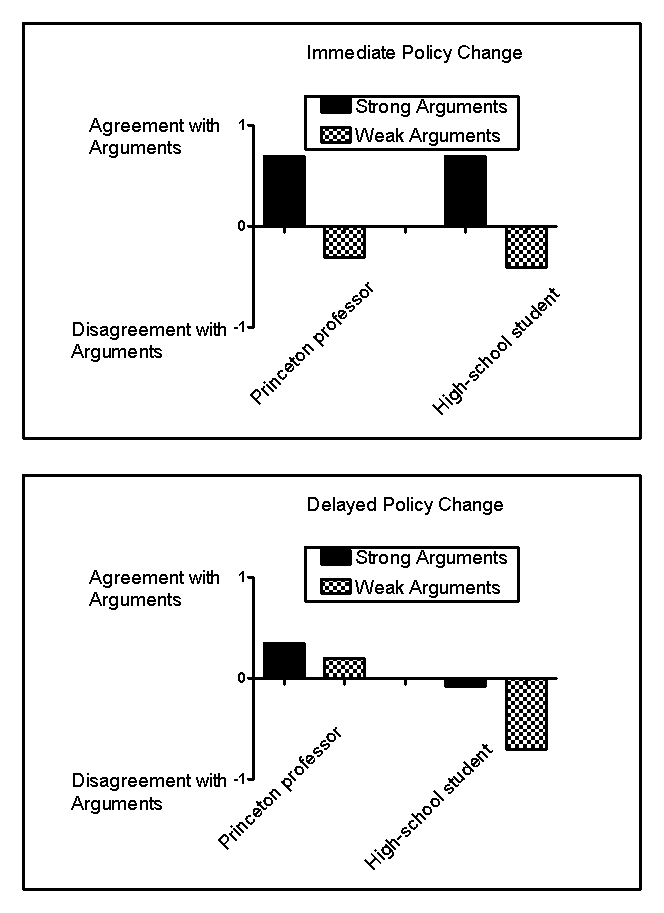Use the following to answer questions
Scenario II
The following scenario contains fabricated results consistent with the following study:
Petty,R.E. ,Cacioppo,J.T. ,& Goldman,R.(1981) .Personal involvement as a determinant of argument-based persuasion.Journal of Personality and Social Psychology,41,847-855.
Every day,consumers are exposed to scientifically based sales,marketing,and public relations strategies designed to influence purchasing decisions,change opinions,or win votes.One common sales strategy is the foot-in-the-door technique,a method that involves first making a smaller request that consumers are likely to grant and then following it with a larger request.Another common strategy is the door-in-the-face technique,which involves making an unreasonably large request that consumers will reject and then following it with a smaller request.When persuasion is necessary,it usually takes one of two forms: heuristic persuasion,which involves an appeal to habits or emotion,and systematic persuasion,which involves an appeal to facts and reason.Often,people will rely more on heuristics-simple shortcuts or "rules of thumb"-to make decisions instead of systematically weighing the evidence.
Petty and colleagues (1981) investigated some of these techniques in college students listening to arguments in favor of their college requiring an institution-level comprehensive final examination for graduation.Some students were led to believe that,if adopted,this policy would take place right away,and some were led to believe that the change would take place in a decade.In addition,some of the students were led to believe that they were listening to an argument from a Princeton professor,and others were led to believe that they were listening to an argument from a high-school student.Finally,some students heard strong arguments in favor of the policy,and some heard weak arguments.Thus,the experiment arranged six groups of students.For example,one group of students heard strong arguments from a high-school student about a far-removed policy change.Figure 13.1 shows fabricated results illustrating the major findings of this experiment.
Figure 13.1 
-(Scenario II) The door-in-the-face technique works primarily because consumers:
Definitions:
Oxygen-Hemoglobin Dissociation
The process by which oxygen binds to hemoglobin in the lungs and is released to tissues, influenced by factors like pH and temperature.
Chloride Shift
The chloride shift is a process during which chloride ions move from the blood plasma into red blood cells as bicarbonate ions leave, helping maintain ionic balance in blood during gas exchange.
Vital Capacity
The maximum amount of air a person can expel from the lungs after a maximum inhalation.
Tidal Volume
The amount of air that is inhaled or exhaled during normal breathing with each respiratory cycle.
Q2: Which hormone is NOT considered a stress
Q4: The prisoner's dilemma game illustrates:<br>A)the hypothesis-confirming bias.<br>B)the
Q9: The _ activates approach behavior in response
Q27: If telomeres become too short,cells can no
Q28: The release of estrogen triggers a tend-and-befriend
Q38: _ is the style of dealing with
Q65: People who score high in conscientiousness tend
Q175: Similar to men,women respond to stress with
Q209: The basic five-factor structure seems to be
Q238: A government that attempts to control the